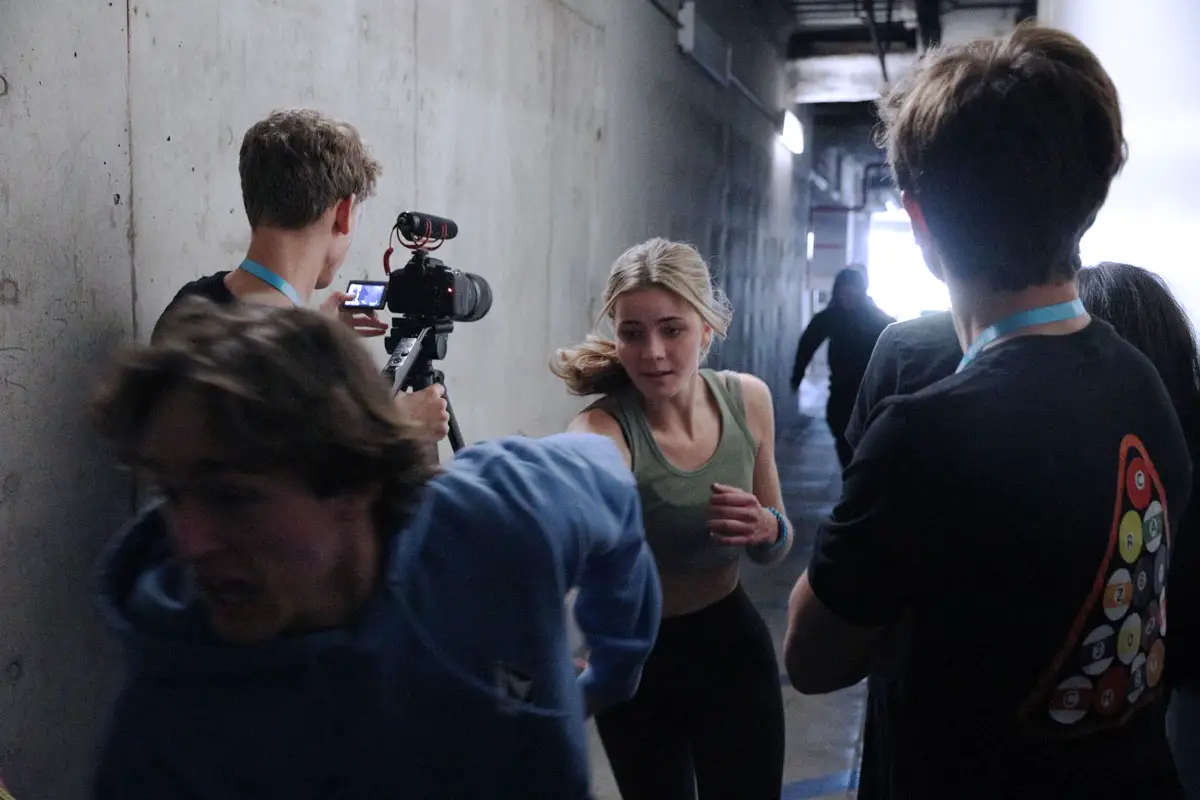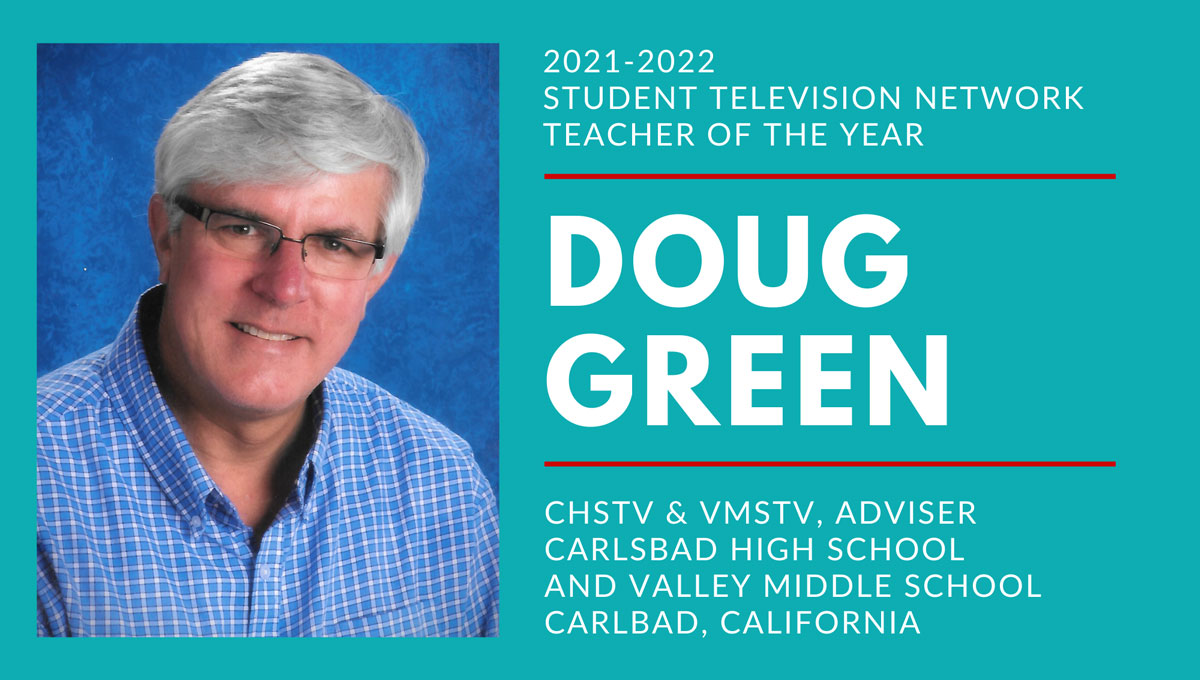CARLSBAD — Once again, local students stand atop the broadcasting world.
The Carlsbad High School and Valley Middle School broadcast journalism programs, with assistance from students at Sage Creek High School and Aviara Oaks Middle School, claimed the top awards at the national Student Television Network’s annual convention on Feb. 20 in Long Beach.
Carlsbad High School’s CHSTV, one of the best high school television stations in the nation, won 11 total awards, including its 16th overall Award of Excellence. The students at Valley Middle School captured the school’s 14th consecutive Award of Excellence, solidifying it as one of the country’s premier middle school broadcast journalism programs.
Both programs are taught by broadcast journalism teacher Doug Green, who was named the 2021-22 National Broadcasting Teacher of the Year and 2016 California Teacher of the Year.

“One of the nice stories is we brought seven Sage Creek students and they competed with Carlsbad High School… and we brought two (students) from Aviara,” Green said. “So really, it was Carlsbad that did well.”
At the convention, the students participated in a number of workshops and breakout sessions with industry professionals. Additionally, each school breaks up into groups of three or four students to produce smaller stories.
Students at the convention also participated in the “Crazy 8 Contest,” which requires students to fan across the city of Long Beach and write, shoot, edit and broadcast a morning show segment within eight hours.
“(Student Television Network) is such a special experience because of the unique atmosphere created by surrounding yourself with thousands of like-minded peers,” said Ben Hanan, of Carlsbad High. “It’s intrinsically inspiring to learn not only from industry professionals but from fellow students who share a similar passion for telling stories.”
Green said one of the challenges of the “Crazy 8 Contest” is that most students are not familiar with the city, which adds to the difficulty of the project. But Green said his students overcame those challenges and created great projects.

Luke Schultz, a 14-year-old eighth-grader at Valley Middle School, said the breakout sessions were informative and students learned from filmmakers, broadcasters, journalists and other professionals. Schultz said the sessions included critiques and tips on how to be a better broadcaster and breaking into the industry.
Valley Middle School did experience some technical difficulties after the team produced what 13-year-old Val Bedoya said was the program’s best-ever story. Bedoya’s small team encountered a corrupted file and missed the story filing deadline.
But the Valley Middle students adapted to the hardship and created a spinoff story on the fly, learning how fast time moves when racing up against a deadline.
Bedoya, an eighth-grader at Valley Middle, said often the team is so focused, that it’s easy to lose track of time.
“You think you have so much time, but there’s a huge lack of time,” Bedoya. “It just goes away. It’s a lot more stressing than it seems.”



